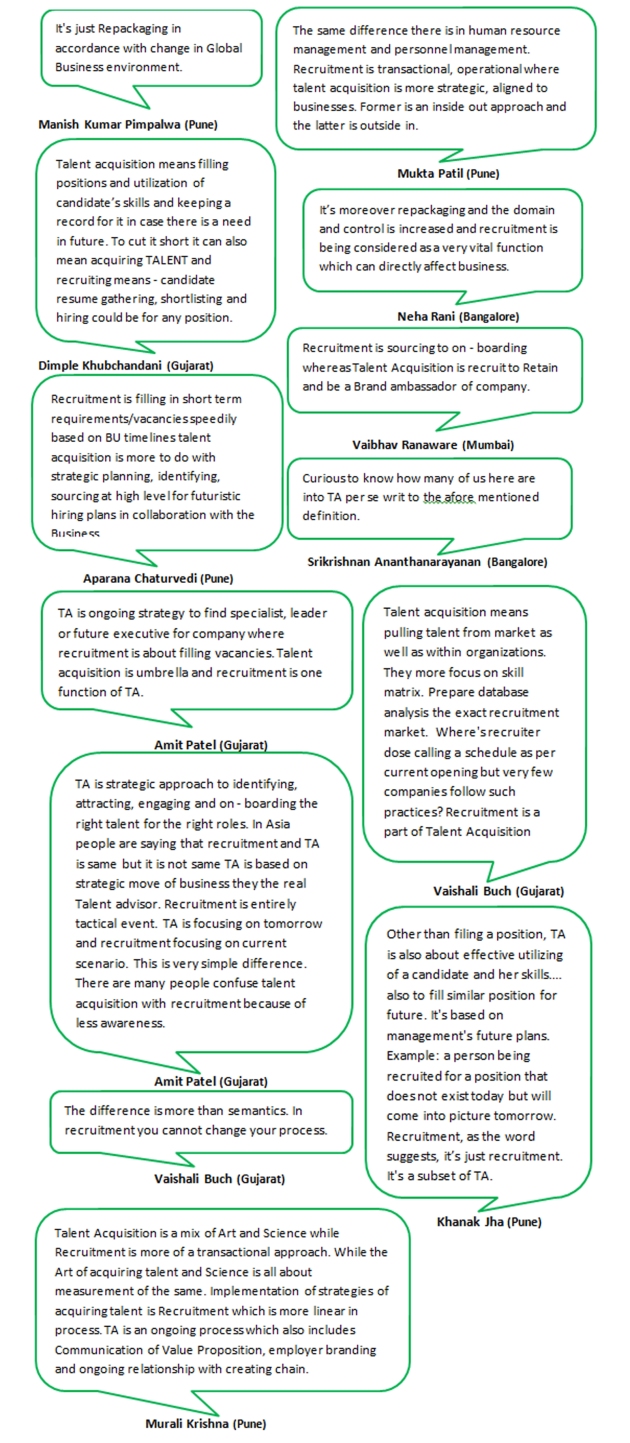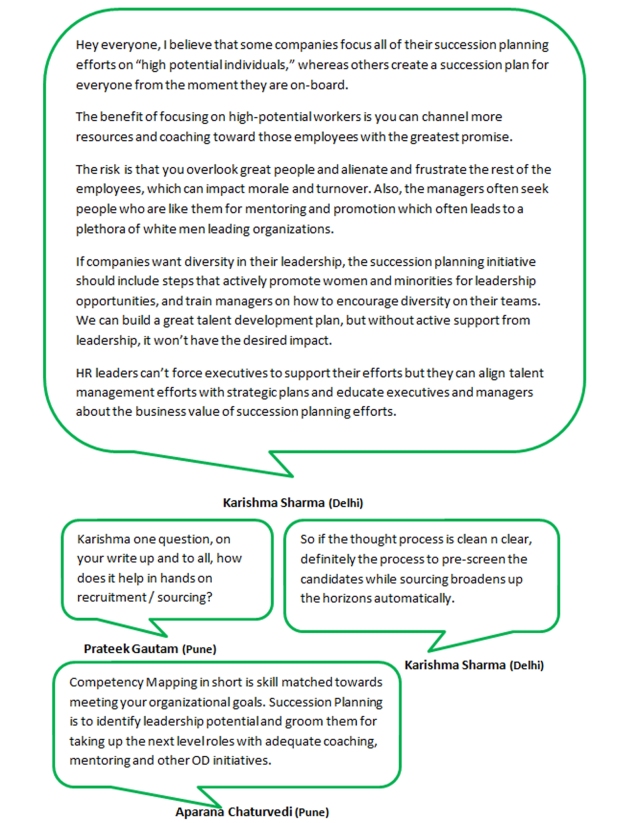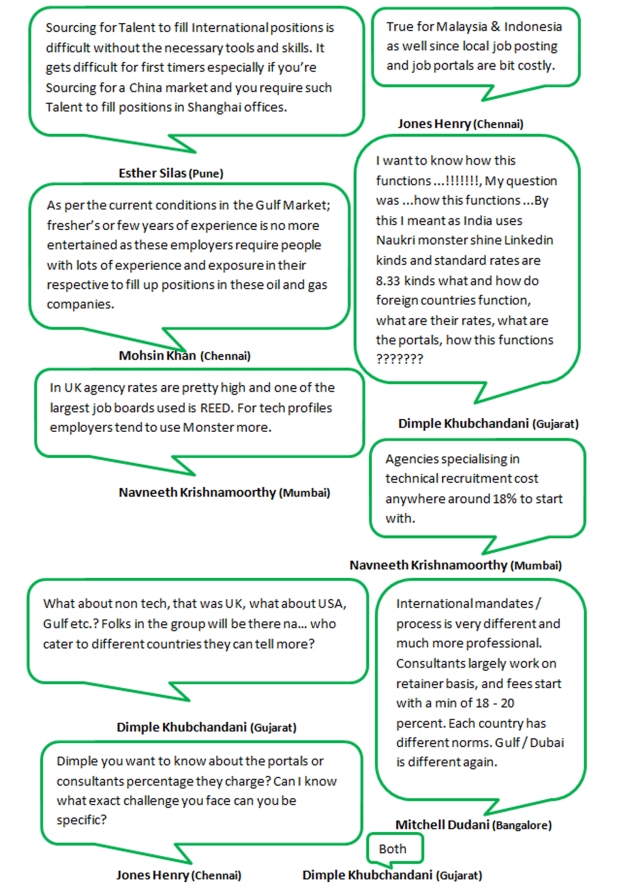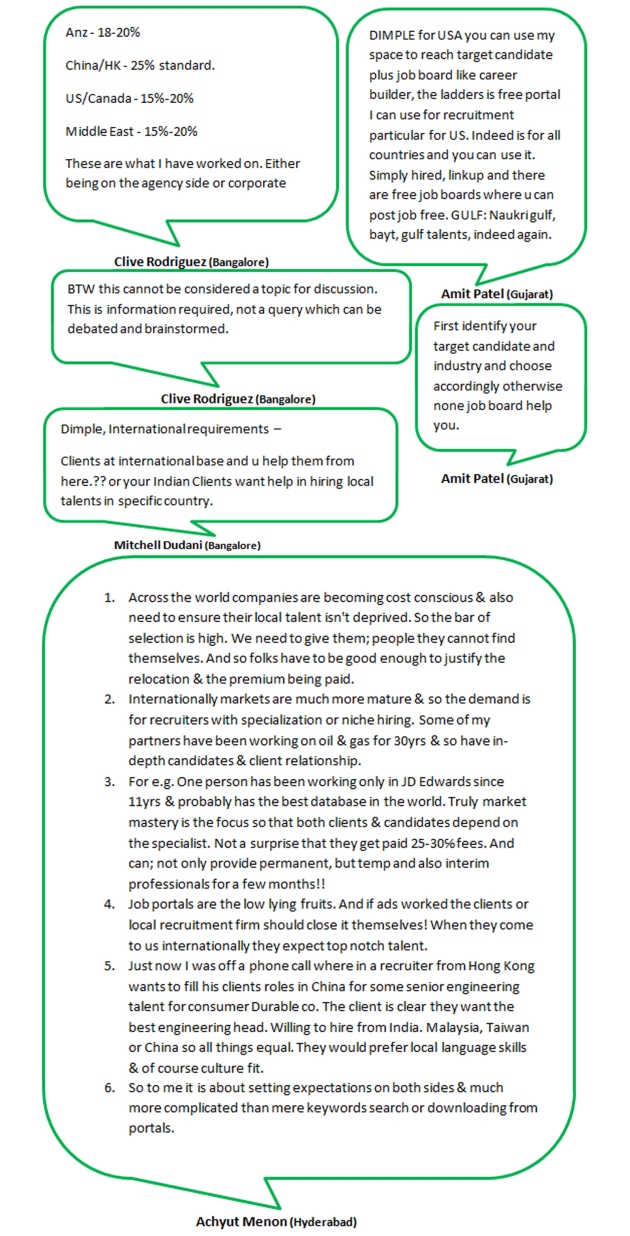There has been a long standing debate about Talent Acquisition and Recruitment and the relation between the two. Based on this development it’s obvious that we’d like to know more about it hence the question what is the difference between Talent Acquisition and Recruitment?
Luckily one of the members of the popular Wednesday’s discussion addressed this very topic, “Difference between Talent Acquisition and Recruitment” upon the suggestion of Swarnim from the Pune WhatsApp Group @SourcingAdda. We received an out pour of responses and here’s what we discovered…
 We’ll if you’ve read this far then I’m sure you’ve found what you’re looking for and are now looking for clarity about what you’ve read so far. Therefore we’ve decided to highlight the key take a ways of what was discussed. So here they are…
We’ll if you’ve read this far then I’m sure you’ve found what you’re looking for and are now looking for clarity about what you’ve read so far. Therefore we’ve decided to highlight the key take a ways of what was discussed. So here they are…
Commonalities
Talent Acquisition, Recruitment, Human Resource & Personnel Management share the commonality of simply being repackaging to match up to the current Global Business environment standard.
Difference between Talent Acquisition and Recruitment
Talent Acquisition
- Talent Acquisition means acquiring Talent
- Talent acquisition is more strategic and aligned to businesses and an outside in approach
- Talent Acquisition is more to do with domain and increased control
- Talent Acquisition is recruiting to retain and be a brand ambassador for the company
- Talent Acquisition is strategic planning, identifying, and sourcing at high level for futuristic hiring plans in collaboration with the Business.
- Talent Acquisition is attracting, engaging and on – boarding the right talent for the right roles and the real Talent advisor.
- Talent Acquisition is on – going strategy to find specialist, leader or future executive for the company.
- Talent Acquisition is the umbrella with more focus on skill matrix such as preparing database analysis of the exact recruitment market.
- Talent Acquisition is about effectively utilising Candidate and their skills to fill similar positions in future when required.
- Talent Acquisition is a mix of Art and Science which is about measurement of the two.
- Talent Acquisition is an on – going process which includes communication of value proposition, employer branding and on – going relationship with creating chains of Talent.
Recruitment
- Recruitment is more of a transactional and operational with an inside out approach
- Recruitment is gathering and shortlisting Candidate résumés and hiring for any position
- Recruitment is a vital function which directly affects businesses
- Recruitment is Sourcing to on – boarding
- Recruitment is filling in short term requirements/vacancies speedily based on BU timelines
- Recruitment is one function of Talent acquisition and is entirely a tactical event with more focus on the current scenario.
- Recruitment is the Implementation of strategies of acquiring talent which is more linear in process.
To some up Talent Acquisition, Recruitment, Human Resource & Personnel Management all different terms share the commonality of repackaging to meet the changes to the Global Business environment standard. Talent Acquisition means acquiring Talent and is more to do with a Business’ growth and is related to these aspects while Recruitment is one function / part of / a subset of Talent Acquisition as a whole.
If you’d like to be part of these discussions then be sure to follow us @SourcingAdda to get real time updates to our upcoming event and activities. If you’ve got some points to add then do leave them in the comments section.






